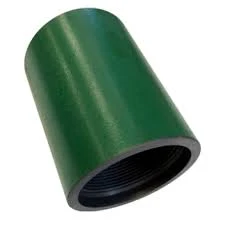- Afrikaans
- Albanian
- Amharic
- Arabic
- Armenian
- Azerbaijani
- Basque
- Belarusian
- Bengali
- Bosnian
- Bulgarian
- Catalan
- Cebuano
- Corsican
- Croatian
- Czech
- Danish
- Dutch
- English
- Esperanto
- Estonian
- Finnish
- French
- Frisian
- Galician
- Georgian
- German
- Greek
- Gujarati
- Haitian Creole
- hausa
- hawaiian
- Hebrew
- Hindi
- Miao
- Hungarian
- Icelandic
- igbo
- Indonesian
- irish
- Italian
- Japanese
- Javanese
- Kannada
- kazakh
- Khmer
- Rwandese
- Korean
- Kurdish
- Kyrgyz
- Lao
- Latin
- Latvian
- Lithuanian
- Luxembourgish
- Macedonian
- Malgashi
- Malay
- Malayalam
- Maltese
- Maori
- Marathi
- Mongolian
- Myanmar
- Nepali
- Norwegian
- Norwegian
- Occitan
- Pashto
- Persian
- Polish
- Portuguese
- Punjabi
- Romanian
- Russian
- Samoan
- Scottish Gaelic
- Serbian
- Sesotho
- Shona
- Sindhi
- Sinhala
- Slovak
- Slovenian
- Somali
- Spanish
- Sundanese
- Swahili
- Swedish
- Tagalog
- Tajik
- Tamil
- Tatar
- Telugu
- Thai
- Turkish
- Turkmen
- Ukrainian
- Urdu
- Uighur
- Uzbek
- Vietnamese
- Welsh
- Bantu
- Yiddish
- Yoruba
- Zulu
Understanding Tubing and Casing Specifications for API Standards and Applications
Understanding API Tubing and Casing Charts
In the oil and gas industry, the integrity and reliability of well construction are paramount for safe and efficient operations. One of the critical aspects of well construction is the selection of appropriate tubing and casing. This brings us to API (American Petroleum Institute) tubing and casing charts, key tools that provide vital specifications and guidelines for these components.
What Are Tubing and Casing?
Before diving into the significance of API charts, let’s clarify what tubing and casing are. Casing refers to the series of steel pipes installed in a well to provide structural stability and prevent the collapse of the wellbore. It also isolates various geological formations to prevent fluid migration between them. Tubing, on the other hand, is the smaller diameter pipe through which the oil or gas is produced from the reservoir to the surface. While both are vital for the function of the well, they serve different purposes and are designed with distinct specifications.
The Role of API Charts
The API tubing and casing charts serve as a reference for industry professionals when selecting the proper types of tubing or casing for specific applications. These charts detail the specifications for various steel grades, sizes, and weights, ensuring that operators can maintain structural integrity under the extreme conditions often encountered in well environments.
The charts are organized in a user-friendly manner, allowing engineers and drilling teams to easily compare different options based on their operational needs. They provide crucial information such as the outside diameter, weight per foot, yield strength, and minimum collapse pressure. These factors help in determining which casing or tubing will withstand the pressures and stresses encountered during drilling and production operations.
api tubing and casing chart

Importance of Material Grades
The API also categorizes casing and tubing based on material grades, which are essential for ensuring durability and performance. Common grades include J55, K55, L80, and P110, each suited for varying pressure and temperature conditions. For instance, higher grade materials such as P110 are often required in high-pressure applications, while lower-grade materials may suffice in less demanding environments.
Understanding these grades is vital for preventing failures that can result from using inadequate materials in harsh conditions. Rigorous testing and adherence to API standards help operators mitigate risks and ensure a safer working environment.
Integration with Well Design
When designing a well, engineers must consider various factors, including the geological environment, expected pressures, and the intended lifespan of the well. The API tubing and casing charts facilitate this process by providing a database of potential materials and their specifications. By carefully choosing the appropriate casing and tubing, engineers enhance the longevity and efficiency of the well while minimizing the risk of failure.
Conclusion
In conclusion, API tubing and casing charts are invaluable resources in the oil and gas industry. They provide essential information for choosing the right materials and designs for well construction, ensuring safety and performance in complex drilling environments. By understanding and utilizing these charts, industry professionals can make informed decisions that enhance the integrity and efficiency of oil and gas operations. As the industry continues to evolve, the importance of these guidelines will only grow, driving innovations in well design and construction practices. Ultimately, the proper selection of tubing and casing not only contributes to operational success but also plays a critical role in advancing safety standards in the energy sector.
-
Tubing Pup Joints: Essential Components for Oil and Gas OperationsNewsJul.10,2025
-
Pup Joints: Essential Components for Reliable Drilling OperationsNewsJul.10,2025
-
Pipe Couplings: Connecting Your World EfficientlyNewsJul.10,2025
-
Mastering Oilfield Operations with Quality Tubing and CasingNewsJul.10,2025
-
High-Quality Casing Couplings for Every NeedNewsJul.10,2025
-
Boost Your Drilling Efficiency with Premium Crossover Tools & Seating NipplesNewsJul.10,2025







